Click on images to enlarge
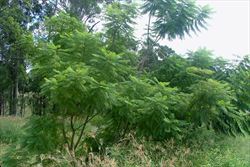
infestation (Photo: Sheldon Navie)

habit in flower in spring (Photo: Sheldon Navie)
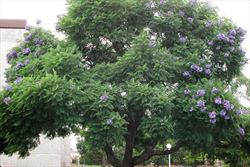
habit in summer (Photo: Sheldon Navie)
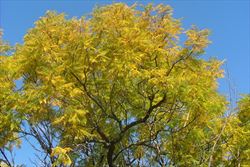
habit in autumn (Photo: Sheldon Navie)
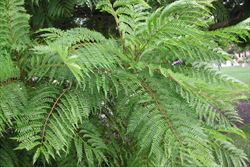
large twice-compound leaves (Photo: Sheldon Navie)
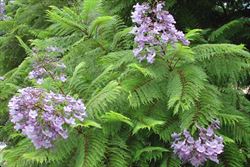
flower clusters (Photo: Sheldon Navie)
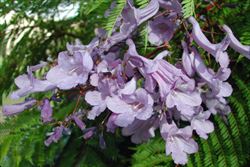
flowers (Photo: Sheldon Navie)
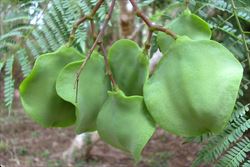
immature fruit (Photo: Sheldon Navie)
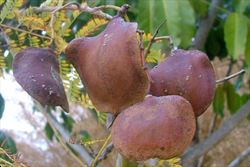
mature fruit (Photo: Sheldon Navie)
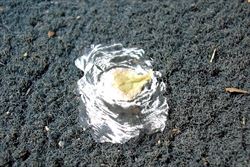
close-up of seed (Photo: Forest and Kim Starr, USGS)
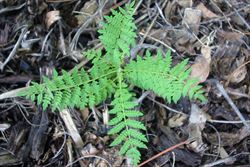
seedling (Photo: Sheldon Navie)
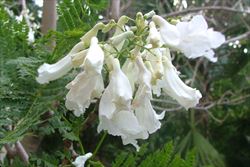
Jacaranda mimosifolia 'Alba' (Photo: Sheldon Navie)
Scientific Name
Jacaranda mimosifolia D. Don
Synonyms
Jacaranda mimosaefolia D. Don
Family
Bignoniaceae
Common Names
black poui, blue jacaranda, Brazilian rose wood, Brazilian rosewood, fern tree, green ebony, jacaranda, jacaranda tree
Origin
Native to South America (i.e. southern Bolivia and north-western Argentina).
Naturalised Distribution
This species is becoming widely naturalised in the warmer parts of eastern Australia (i.e. in south-eastern and northern Queensland and in the coastal districts of northern New South Wales).
Naturalised overseas in southern Africa, Hawaii, south-eastern USA (i.e. Florida) and beyond its native range in southern South America.
Notes
Jacaranda (Jacaranda mimosifolia) is regarded as an environmental weed in New South Wales and Queensland. Though this species has been widely and commonly cultivated throughout Australia for many years, it was first recorded as becoming naturalised in Queensland in 1987. It has spread from cultivation into nearby open woodlands and grasslands, particularly on creekbanks and near waterways.
Jacaranda (Jacaranda mimosifolia) was recently ranked among the top 200 most important environmental weeds in south-eastern Queensland. It appears on numerous local environmental weed lists in this region (e.g. in Ipswich City, Redland Shire and Caboolture Shire) and has been recorded in eucalypt forest on the Gold Coast.
This species is also widely regarded as an environmental weed in north-eastern New South Wales (e.g. in the Byron, Lismore and Tweed Shires) and is also seen as a potential environmental weed in the wider Sydney and Blue Mountains region. Though it rarely reaches maturity in these cooler areas, naturalised plants have been reported in grasslands and woodlands in suburban Sydney.
In other parts of the world, the spreading growth habit and the dense foliage of jacaranda (Jacaranda mimosifolia) have been reported to shade out native plants and prevent their regeneration.

